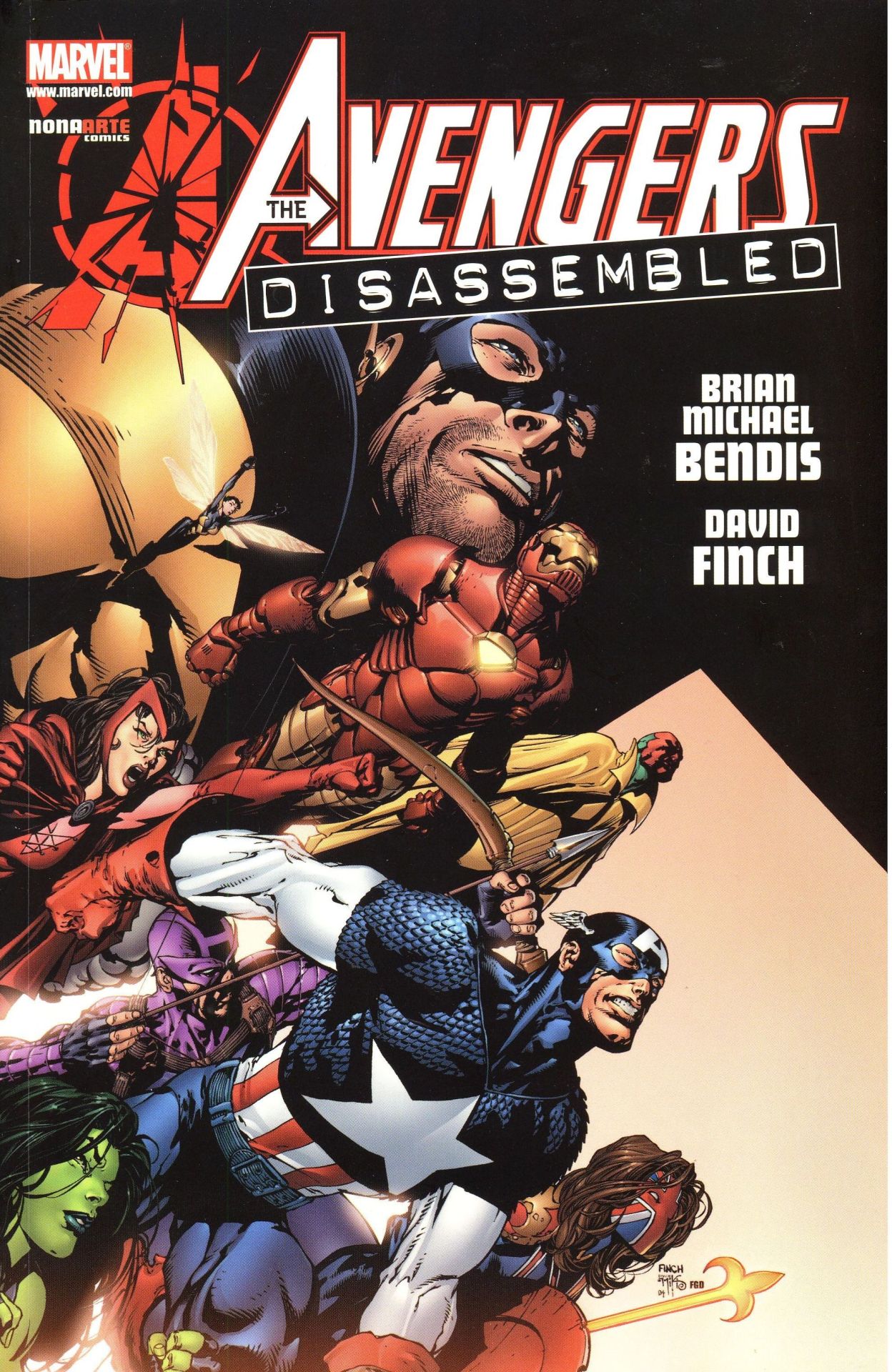I would say that Marvel's thing for this era would be events. Events and making as many tie-ins and crossover comics as they can for events. However, the problem is that many events follow a similar trend.
Avengers Dissassembled: Scarlet Witch attacks the Avengers and the Avengers
House of M: Hero vs Hero in an altered reality
Annihilation: Nova, Starlord, Gamora, Drax, Silver Surfer, Ronan and Super Skrull vs Annihulus.
Civil War: Hero vs Hero. Capt America dies, while Tony and Reed look like the biggest A-holes. But Marvel said Tony and Reed were right all along.
World War Hulk: Hulk vs X-Men, Fantastic Four, Avengers and anyone else he comes across.
Annihilation Conquest: Starlord, Gamora, Drax, Groot, Nova, Rocket Raccoon, and Quasar vs the Phalanx and Ultron. The success of both Annihilation stories led to the 2008 revival of the GOTG.
Messiah Complex: The first mutant born since House of M, and Bishop sets out to kill her.
Secret Invasion: Hero vs Hero vs Skrull
Messiah War: Cyclops trusts Hope to Cable and the X-Force to protect her from Bishop.
Seige: Norman Osborn attacks Asgard
Fear Itself: An Asgardian God manipulates the heroes of Earth, instilling fear and doubt and that leads to more hero vs hero.
Schism: Wolverine vs Cyclops. Fractures the X-Men. Logan makes his own school, and Scott makes his own school.
Shadowland: Daredevil with the Hand Clan fights Spider-Man and the Defenders
Avengers vs X-Men: Nuff said. Cyclops kills Prof X, is thrown in jail and the X-Men all look like bullies.
Infinity: The Avengers vs Thanos.
Original Sin: Nick Fury murders The Watcher Uatu, and sets the Avengers on a wild goose chase for his killer. This leads to more hero vs hero, until the misunderstandings are resolved and the mystery is solved. Also, Thor is left unworthy, for some reason.
AXIS: Another topsy turvy world, where the some heroes are made bad and some villains are made good, and they fight.
Hickman's
Avengers vs the Illuminati members of the
New Avengers and to an extent
Secret Wars (2015): The Illumanti is destroying parallel Earths during the "incursion" era, and Captain America's led Avengers vow to stop them from continuing their actions. Think of the incursions like COIE multiverse, but instead of the Anti-Monitor destroying Earths, it's the New Avengers.
Civil War II: Another Civil War, and yet another hero vs hero event
Divided in Marvel NOW 2.0: The new status quo for Marvel after Civil War II ends. Notice the absence of the FF, X-Men, Daredevil, Peter Parker, and Dr Doom holding Iron Man's helmet. You can imagine where this is going.
http://www.comicbookresources.com/a...ff-with-enigmatic-divided-we-stand-group-shot
Hero vs Hero is the status quo at Marvel during this era, and as you can see, it is still going on. How can you like your heroes if they are always at each others throats? While it's different for every character, these big events can bleed over into the solo titles of a character's book, and the repercussions can be felt there. Ms Marvel (Carol) was a victim of this back in her 2005 run. Every other 6 or 7 issues another event was happening and Carol's book had to tie into it. This led to the author curtailing his own vision, in order to keep up with editorial demands.
Characters like Spider-Man, DD, the FF normally can avoid the big events, and have their own smaller events. They miss out on the action, but sometimes that's or the best. However things like One More Day and Brand New Day were crafted to reset Spider-Man's status quo and remove consequences other events latched on to him (Civil War and Peter revealing his identity).
While Marvel does not have reboots the way DC does, they do have line wide resets to make the titles more accessible to new readers. These would be
Marvel NOW (2012-2015), the short lived
All New All-Different (2015-2016) and the new
Marvel Now (2016- ). Both Marvel and DC are chasing the new readership rabbit, and give the length of these eras and the kinds of stories they put out during these times, you can see they aren't very successful.
During the first Marvel NOW era, Thor became unworthy (for still unexplained reasons) and replaced by Jane Foster, the FF were cancelled after 50+ years running), Carol Danvers has received 3 relaunches to "make her happen" (possibly to make her Marvel's WW), the X-Men were given 2 mediocre books authored by BMB (the man responsible for culling their herd since 2004), the Avengers were turned into out right villains during the incursion arc etc.
Personally, I've had enough of Marvel's direction.It's just not the same and it seems to me at least that Marvel is doing things now to get readers attention, and not tell compelling stories with their characters. I mean, are there any good villains and villainess for the Marvel heroes to fight anymore?
I would talk about how Marvel is also trying to appeal to the pop culture crowd by making their comics and TV properties as similar to the MCU as possible (which so far has been for the worse), but I won't. I still have to write about DC.
My advice for this era of Marvel, is ignore most of the events and focus on the individual or team of characters' titles.
Ed Brubaker's 2005-2012:
Captain America
Mark Waid's 2011-2015:
Daredevil
Christopher Yost's 2008-2010:
X-Force + the
Messiah Trilogy he coauthored on the X-Men poper title.
Rick Remender's 2010-2012:
X-Force
Dan Slott's 2013-2016:
Superior and Amazing Spider-Man
Jonathan Hickman's 2009-2012:
Fantastic Four and Future Foundation
Dan Abnett's 2008-2010:
Guardians of the Galaxy + both Annihilation stories and Inhumans War of Kings
G. Willow Wilson's 2014-2016:
Ms Marvel
Matt Fraction's 2012-2015:
Hawkeye
Jason Aaron's 2012-2014:
Thor: God of Thunder
Al Ewing's 2015-2016:
Ultimates




 .
.



